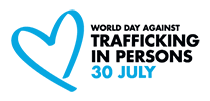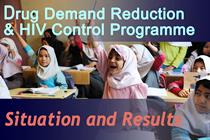Afghan opiates remain global threat, says new UNODC Study
Kabul / Vienna. 29 July 2011. Afghanistan remains by far the largest source of the global illicit trade in opium and heroin, which generated some US$ 68 billion in 2009 - a sum exceeding the GDP of many countries - according to the study Global Afghan Opium Trade: A Threat Assessment which was issued yesterday by the United Nations Office on Drugs and Crime (UNODC). Covering international flows of Afghan opiates in 2009, this is also the first in-depth study by UNODC of trafficking in acetic anhydride to Afghanistan (an indispensable 'precursor' chemical used for converting opium into heroin).
Spanning a decade, the report states that some 16.5 million people annually abuse opiates worldwide. Heroin takes the bulk of the market with 12 - 13 million people consuming 375 tons of heroin per year, and of that, a sizeable 150 tons are consumed in Europe.
Opiate consumption in Afghanistan and neighbouring countries has risen sharply in the past decade - 35,000 out of the current 123,000 hectares under poppy cultivation in Afghanistan are needed to produce opiates for this region alone. But the problem extends far beyond. Afghan heroin has also been spreading to consumer markets in East Asia traditionally supplied by Myanmar.
Another notable trend is the increase of heroin flows to Africa, which could re-emerge as a trafficking route to Europe, or lead to more drug consumption on that continent.
Afghanistan and precursor inflows
Acetic anhydride is a legal chemical commonly used in household and industrial products. However, since there is no recognized need for the substance in Afghanistan, the chemical is diverted from legal domestic markets in Europe and Asia and smuggled into the country. Some 38 tons of acetic anhydride were seized at heroin production sites in 2009, mostly in southern Afghanistan.
Seaports in the Islamic Republics of Iran and Pakistan have been seizing greater amounts of both exported heroin and imported acetic anhydride. With 300 to 500 laboratories producing an estimated 380 tons of heroin in 2009, Afghanistan continues to convert most of the world's opium into finished products - morphine and heroin.
The profits of crime
In 2009, UNODC estimates that 150 tons of Afghan heroin reached Europe, 120 tons Asia and 45 tons Africa. Law enforcement bodies seized 76 tons of heroin worldwide that year, with an interdiction rate of up to 16 per cent.
Transnational organized crime groups profited most from the US$ 68 billion trade in 2009, with Afghan farmers earning a relatively small share (US$ 440 million) of this total. Criminal and insurgent groups who benefit from the trade pose serious challenges to governance, security, stability and development in Afghanistan, its neighbouring countries and beyond. Drug traffickers exploit the deteriorating security situation in the southern provinces of Helmand, Kandahar and Nimroz, while corruption lubricates the industry nationwide.


